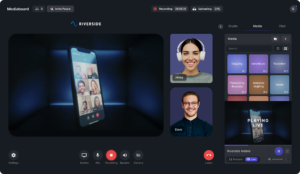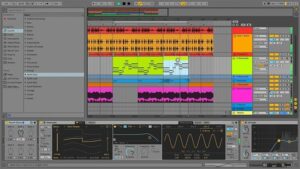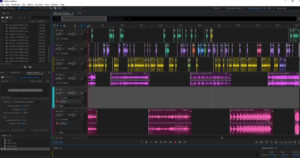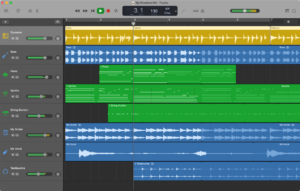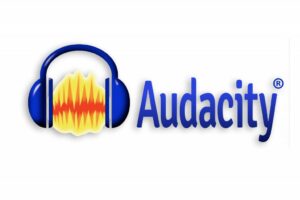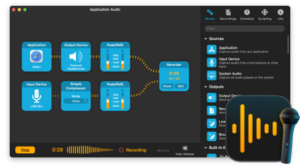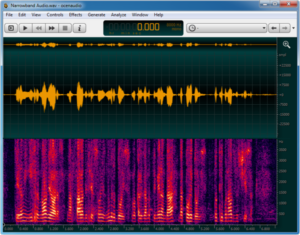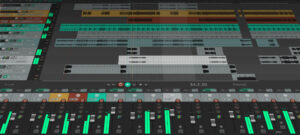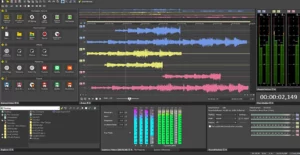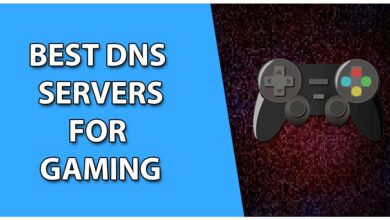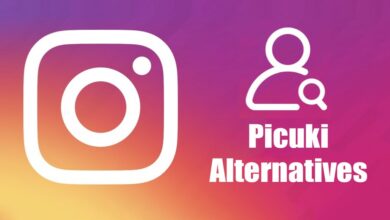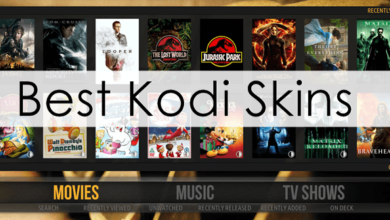Top 10 Best Audio Recording Software for PCs in 2024
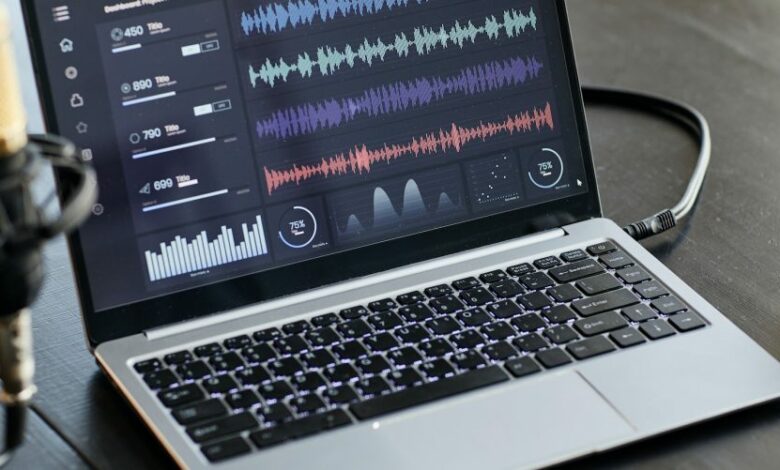
Anyone who records audio to provide content for their job, studies, or enjoyment is aware of how crucial it is to have good audio. The finest audio begins with the correct software, of course.
Depending on your demands, the ideal software will take numerous forms. If you’re doing an interview with guests as opposed to recording by yourself, your requirements may alter. Fortunately, there is software available for every use situation.
We looked at some of the top audio recording programs available and concentrated on the functions needed by podcasters, interviews, live streamers, and other content producers. To find out more about your options for recording audio and to examine our selection of the best recording software, read our evaluation of audio recording software.
How Does Audio Recording Software Work?
A user interface that captures sounds is what audio recording software is, to put it simply. These programs, which frequently serve as a digital workstation (DAW), enable users to create audio files, alter and mix audio, and record any sound.
To record their voices and the voices of their guests, many podcasters employ recording software. The program often gathers audio from the input device you select, whether it’s the built-in microphone on your computer or (ideally) a professional microphone.
Additionally, you may utilize audio recording software to import audio recordings from other sources and mix, edit, or otherwise modify them to fit your project’s goals.
Finally, you may import and export audio in a variety of formats using the best audio recording software.
Browse our guides to
Optimal Podcast Recording Software
How to use Zoom to record distinct tracks
What Advantages Do Audio Recording Software Offer?
Selecting the appropriate software is essential for content producers like podcasters and musicians. To enhance the quality of their audio files and combine sounds to produce coherent material, experts employ audio recording software. Sound effects, music, intros, outros, and even recorded advertisements may all be added to audio recordings using good audio editing tools in audio recording software.
The following are some advantages of utilizing audio recording software:
monitoring sounds in real-time
Mastering and mixing are simple.
audio of the highest caliber that sounds expert
Sharing and streaming capabilities on social media
Less background noise is needed while capturing audio.
You may make your audio from excellent to amazing with the help of good audio recording software. Utilizing the mixing options most audio records provide—adding music, intros, sound effects, and more—you may enhance the quality of your work as well as give it personality.
The Most Crucial Elements to Take Into Account for Audio Recording Software
With so many options available on the market, finding the finest audio recording software for your material might seem impossible. When selecting recording software for your recording and editing needs, you should pay attention to a few crucial characteristics. Make sure the program you select has the following capabilities for audio recording and editing:
Digital vs. Analog Recording
You should always check whether a piece of software employs digital or analog recording. Your ability to modify your audio files will be impacted by this. Here’s the distinction:
When audio is recorded analogly, it is stored on a reel of magnetic tape as a sequence of magnetic charges.
Audio is saved digitally during recording so that it may be read and understood by a computer or other digital device.
Digital recording is used by most contemporary audio recording programs. If not, you’ll need to digitize your analog audio files before editing if your audio recorder doesn’t.
Sound Mixing Options
Sound, music, and other audio from several tracks are combined into one channel during audio mixing. You add intros, outros, advertisements, and sound effects at the production stage to give your material some personality. Since audio mixing is a crucial step in the editing process, your recording software should offer a wide range of audio mixing choices.
Gain and Equivalence
All high-quality recording programs allow you to change the gain and equalization settings so that your audio has a consistent tone throughout. Gain adjustments will guarantee that the sound level is constant while an equalization will eliminate unwanted sound picked up outside of the frequency band you select.
Requirements for an Internet Connection
Be wary of online recording tools that need a constant internet connection in order to make high-quality recordings. Your audio’s quality is reduced by a bad connection or connectivity troubles. Find a platform that offers local recording. This kind of software doesn’t require a steady internet connection in order to record in excellent quality—it does so directly on your gadget or computer.
Noise cancellation
The majority of annoying sounds in your audio may be avoided by building a podcast studio correctly and using quality equipment. You won’t be able to completely block out noise, so seek for recording software that can do this. The majority of recording software packages offer tools for removing hisses, hums, pops, and plosives.
Record a number of channels
If you co-host a podcast or host an interview-based podcast, you must be able to record numerous channels. Verify that the audio recording program you use supports multi-channel recording. Even if you typically only record yourself, being able to record numerous audio sources simultaneously is useful.
Audio editing
Your recording will sound better if you use audio recording software. A polished track with a professional sound may be produced by editing recordings to remove extraneous noise and cut unnecessary talk. If you’re new to editing audio, look for an application that has straightforward drag-and-drop and cut/paste functionality.
Trimming
You may shorten the length of your audio tracks using the trimming option. Additionally, you may produce audio clips that you can use as sound bites for commercials, special effects, or anything else that comes to mind.
How to use Zoom to record distinct tracks
What Kinds of Audio Formats Does Audio Recording Software Support?
Different audio formats will be supported by each program. Any audio recording software’s supported audio formats may be found in the specs. If the social network or streaming service you use demands audio files in a certain format, make sure the tool you use can export the file type you need.
Among the most often used audio file formats are:
- MP3
- One MP4 file contains both the audio and the video.
- M4A
- FLAC
- WAV
- AAC
Does Sound Quality Change When Using Audio Recording Software?
Simply said, absolutely. The quality of your recorded audio depends on the recording program you use.
Why? Because the quantity of data collected is ultimately what matters.
TVs will be used as an example. You probably already know that the picture quality improves with increasing television resolution (consider SD, HD, and 4K). This is due to the fact that more pixels allow for greater detail, increasing the sharpness of the image.
The same idea applies to audio as well. The sound is clearer and of greater quality the more information the recorder is able to collect. This is why you should seek for features designed for professional recording when selecting your audio recording software.
A portion of the valuable audio data is lost if the tool compresses audio to conserve bandwidth when sending data, which results in a sound that is less clear and crisp.
(Free and Paid) The Best Audio Recording Software for 2023
1. Riverside.fm
If you’re seeking for inexpensive, high-quality audio recording software, Riverside is your best option. Riverside offers 4K local video and audio recording for browser-based recording for the first time, and it produces high-quality podcast episodes regardless of the format you select.
Price: There are no cost options, and paid plans start at $15 per month.
Mac and Windows computers, as well as iPhone and Android mobile devices, are compatible.
Notable characteristics
- Local recording ensures that all files are recorded directly on your device and that a poor internet connection won’t degrade the quality of the recordings.
- audio resolution of up to 48 kHz and high quality
- WAV audio that hasn’t been compressed for best quality, or MP3 audio for smaller files.
- Each participant’s audio and video tracks should be separate.
- uses gradual cloud uploading to ensure the security of your recordings even if your internet connection is lost.
- Producer mode enables the host or producer to instantly modify audio levels, minimizing the need for post-production.
- For simple sound effects while recording, use a live media board.
- Facebook, YouTube, Twitter, Twitch, and other social media platforms—as well as the platform itself—have integrations for live streaming
- Use AI to quickly create shareable segments that you can use to promote and share your podcast on social media.
- Automatic audio transcriptions for transcripts and captions immediately upon recording, allowing for simple content repurposing
- Live video calls from visitors are a special feature of podcasting software.
- Free of installs or downloads, and simple to use
- 8 maximum guests and co-hosts
2. Ableton Live 10
Through its sophisticated DAW, Ableton Live offers a lot of creative potential. The considerable creative freedom you are given over audio files makes it clear that the recording program was built for musicians and artists.
Price: $99 for a starter kit
Compatible with Windows and Mac
Notable Characteristics:
- the capacity to record concurrently on several tracks
- More than 5,000 sounds and instruments
- strong automatic features
3. Adobe Audition
Adobe Audition is used by many seasoned content producers, particularly those who work in the podcasting industry, to record and edit their work. This podcasting software is jam-packed with tools you may use to create a podcast of high-caliber. Adobe Audition might not be the greatest option for you if you’re a music producer due to the dearth of music creation capabilities it offers.
Cost: $20.99 per month
Compatible with Windows and Mac
Notable Characteristics:
- works well with other Adobe applications
- Capabilities for single-track and multi-track editing
- Excellent for noise reduction, sound eradication, and audio restoration
4. Apple GarageBand
If you own an Apple device, GarageBand is most likely already installed. The iPhone, iPad, and other Apple devices can record professional audio with this sophisticated (yet free) recording application. In general, it’s among the greatest free audio recording programs for Mac users who are just starting out.
Because it was created for artists, Garageband includes a wide range of virtual instruments, including guitars, pianos, and keyboards. Although the program is quite customizable, you may make different tracks for intros and outros, commercials, music, and even voiceovers.
The recording platform also has a visual EQ with eight bands that are color-coded and grouped from treble to bass on your computer screen. Additionally, it interfaces with a number of plugins to increase your ability to record and manipulate audio.
Cost: Free
Only compatible with Mac
Notable Characteristics:
- supports plug-ins from third parties
- Effortless, streamlined user interface
- competences for social sharing
5. Audacity
Podcasters and other content producers of all abilities may record and edit quality audio with the adaptable Audacity audio recording tool. Although this recording program lacks some of the more sophisticated capabilities found in other digital audio workstations, it still enables you to quickly and easily edit your audio. Although this free program has a somewhat high learning curve, it does contain several helpful features.
Cost: Free
Compatible with Windows and Mac
Notable Characteristics:
- capability for batch and multitrack processing
- open-source applications that are regularly updated
- Combine, mix, and import audio recordings with ease.
- Editing files in WAV, AIFF, FLAC, MP2, MP3, and Ogg Vorbis
- sound quality in 16-, 24-, and 32-bits
- Using audio effects to alter a track’s pitch and speed
- converting files to many widely used audio formats
6. AudioDirector
There are several elements in this voice recording program that may be used to achieve very clear speech in your audio recordings. Plosives, clicks, pops, hisses, and other interference may be taken out of your recordings using a variety of options in this program. Create professional recordings with a full-bodied and balanced sound with the program.
Price: $129.99 for a one-time fee or $4.33 a month (billed annually) for a subscription.
Compatible with Windows and Mac
Notable Characteristics:
- supports batch processing and multi-channel device recording.
- powerful instruments for producing clear voices
- modern tools for audio restoration
7. Audio Hijack
You may record audio from an input device, your computer, or any program using Audio Hijack. You may record chats from programs like Google Talk, FaceTime, and Skype using the audio recording software. Additionally, it offers functions that enable live streaming to Facebook, YouTube, Twitch, and other social media sites simple. It’s a fantastic option for beginners thanks to its innovative UI.
Price: $64
Only compatible with Mac
Notable Characteristics:
- Broadcasting and live-streaming capabilities
- Options for simplified recording
- numerous sources of input are captured concurrently.
8. Ocenaudio
You may do simple audio changes with Ocenaudio’s free audio recording software. Ocenaudio includes all the capabilities you need to edit your audio and create a high-quality recording, but not having as many as competing audio recording software that you have to pay for. The application provides editing tools like adding sounds and effects that many other free platforms don’t offer, and the UI is easy to use.
Cost: Free
Compatible with Windows and Mac
Notable Characteristics:
- spectrogram and file analysis that is helpful
- There is no restriction on the number or duration of audio files you can edit.
- previews of audio effects in real-time
9. Reaper
Reaper from Cockos is very cost-effective, although it is not recommended for novices. If you intend to utilize Reaper as your main audio recording program, you need have some expertise. Those who are unfamiliar with utilizing digital audio workstations may feel overwhelmed by the interface’s lack of intuitiveness. Raper is a potent tool for multi-channel audio recording, mixing, and mastering if you know what you’re doing.
Price: Starting at $60 for one time only.
Compatible with Windows and Mac
Notable Characteristics:
- powerful programs for altering MIDI data and audio snippets
- complete automation abilities
- complete adaptability of the user interface
10. Sound Forge Audio Studio
You may quickly clip, reposition, and edit audio with this recording software’s simple interface. The software’s wizardFX package allows anybody, even those with little prior experience recording or editing audio, to produce a clean recording that sounds excellent.
Cost: “From $39.99 one-time”
Compatible with Windows and Mac
Notable Characteristics:
- multi-track, multi-channel recording
- 32-bit/384 kHz professional recording quality is possible.
- capability for distant recording

